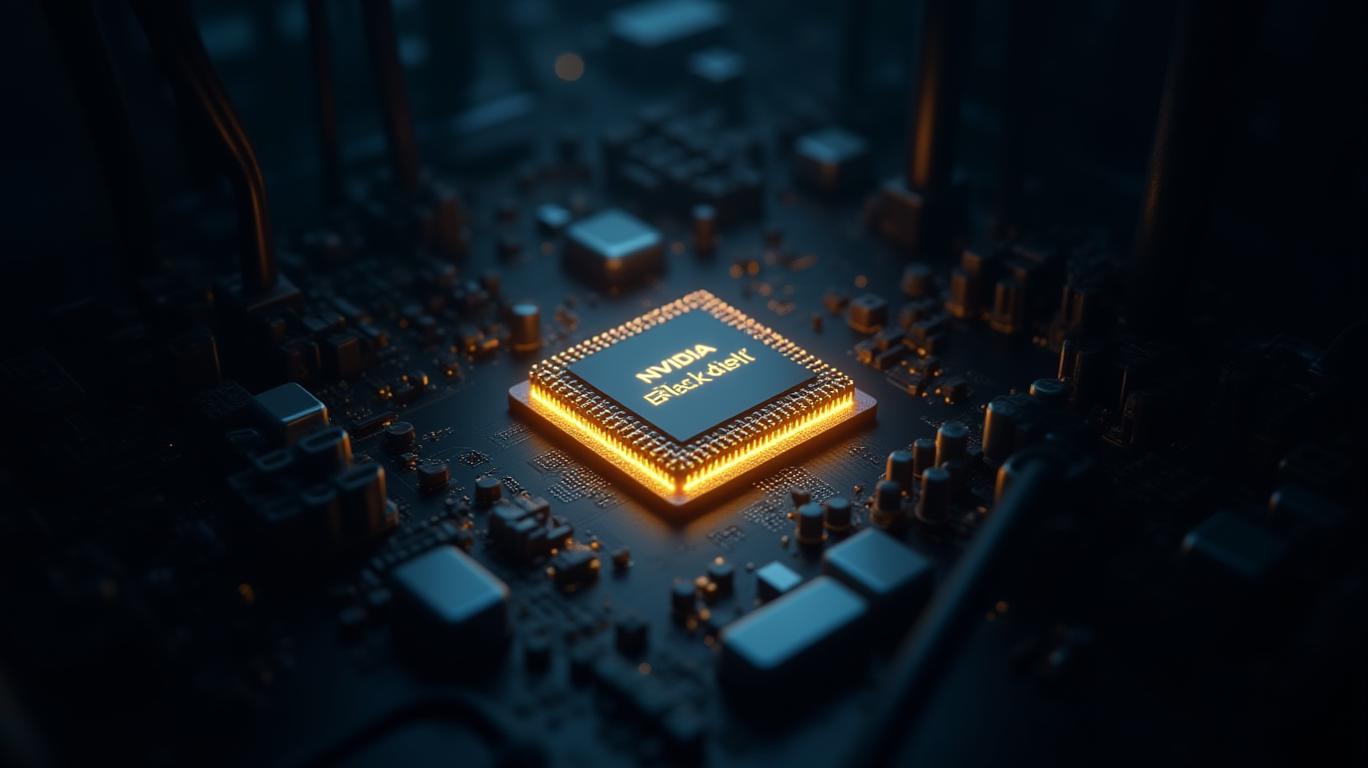NVIDIA's AI Supremacy: Why NVDA is a Must-Hold in a Volatile Tech Landscape
The tech sector has faced relentless headwinds in 2025—crypto selloffs, macroeconomic uncertainty, and geopolitical tensions have rattled markets. Yet, amid this turmoil,
(NASDAQ: NVDA) stands as a pillar of resilience, its AI-driven dominance defying the gloom. Let’s dissect why this stock is primed to deliver asymmetric upside, even as competitors stumble and fears of a tech slowdown loom.The Q4 Results: A Masterclass in Structural Growth
NVIDIA’s fiscal Q4 2025 earnings ($39.3 billion revenue, +78% YoY) were nothing short of extraordinary. The Blackwell chip, its AI supercomputer architecture, single-handedly generated $11 billion in revenue in its first full quarter—a “fastest product ramp in NVIDIA’s history,” as CFO Colette Kress declared. This isn’t just hype: Blackwell’s 25x higher token throughput and 20x lower inference costs compared to its predecessor have made it indispensable for training next-gen reasoning AI models like Grok-3 and DeepSeek R1.

The data center segment surged to $35.6 billion (+93% YoY), fueled by cloud giants (AWS, Azure, Google Cloud) racing to deploy NVIDIA’s GB200 systems. Even geopolitical risks—like U.S. export controls—have done little to dent demand, as China’s AI spending (up 184% YoY to $5.5 billion) proves. Meanwhile, the automotive sector hit $570 million (+103% YoY), with Toyota and Hyundai locking in multi-year partnerships for autonomous driving systems.
Why Fears of a Tech Slowdown Don’t Apply to NVIDIA
Critics point to crypto’s decline or slowing enterprise spending as risks. Yet NVIDIA’s AI infrastructure plays are decoupled from these trends. Cryptocurrency’s slump? NVIDIA’s gaming revenue (down 11% YoY) is a rounding error compared to its AI-driven juggernaut. China’s regulatory overhang? NVIDIA’s $500 billion Stargate Project partnership with the U.S. government and its role in global cloud infrastructure mean its growth isn’t tethered to one region.
While the S&P 500 tech sector has stagnated, NVDA has surged 140% since late 2023, reflecting its monopoly on AI compute demand.
Valuation: A Premium Justified by Unmatched Moats
NVDA trades at a 28x forward P/E, higher than peers like AMD (18x) and Intel (15x). But this premium is earned. NVIDIA’s AI software stack (TensorRT, Triton Server, NeMo Retriever) and its $130 billion annual revenue run rate create a flywheel effect: the more AI models trained, the more Blackwell chips are needed.
Analysts worry about margin compression (Q4 gross margin dipped to 73%, down from 76% a year ago). But this is temporary—NVIDIA expects margins to rebound to the mid-70s by late 2026 as production scales. Meanwhile, competitors like Graphcore and Cerebras lack both the software ecosystem and the cloud partnerships NVIDIA boasts.
The Case for Overweighting NVDA: Asymmetric Upside Ahead
- AI Scaling Laws: Reasoning AI requires exponential compute, and Blackwell is the only chip architecture that meets this demand at scale.
- Secular Tailwinds: The shift to agentic AI (autonomous agents) and physical AI (robotics, autonomous vehicles) will amplify demand for NVIDIA’s tools.
- Valuation Safety: Even if growth slows to 30% annually, NVDA’s $130 billion revenue base and 70%+ margins leave room for further upside.
AI revenue now accounts for 85% of NVIDIA’s total revenue, up from 50% in 2023—a clear sign of structural dominance.
Conclusion: Buy the Dip, Hold the AI Leader
NVIDIA isn’t just a tech stock—it’s the infrastructure backbone of the AI revolution. While macro fears may cause short-term volatility, the long-term demand for its chips is as solid as Moore’s Law. With $43 billion in Q1 2026 guidance and a roadmap that includes the Blackwell Ultra (2026), now is the time to overweight NVDA.
Investors seeking asymmetric upside in tech should ignore the noise and double down on NVIDIA—the ultimate play on AI’s future.
Final Call: Buy NVDA now. Let the bears fade into irrelevance.

Comments
No comments yet